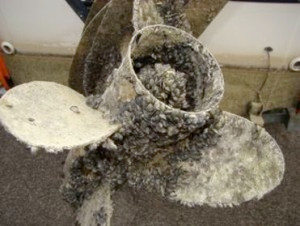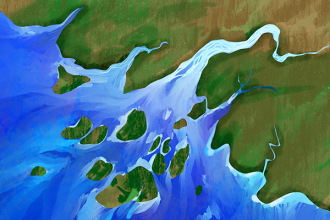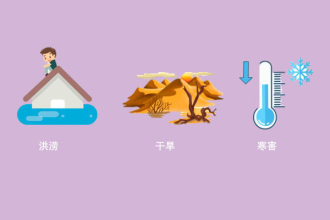Glacier melting could release virus? More uninvited guests科学辟谣 2020-03-23 |
Sooner or later the glacier visitor will come, it is better to hurry up and do the visitor registration.
Author | Yu Miao, Department of Environmental Medicine and Public Health, Icahn School of Medicine at Mount Sinai
Recently, a preprinted paper pointed out that many unknown viruses were found in the ice core of the Qinghai-Tibet Plateau. In consideration of the global warming environment, many people began to concern whether these "uninvited guests" frozen in history will be released after the glaciers melt? Are they harmful to people?

This sample of the Gurria Glacier (also known as the Gurria Ice Cap), located in the West Kunlun Mountains of the Qinghai-Tibet Plateau, is well known for the collection of ice core records | Web Pictures
The ubiquitous virus: ocean output is better
The ice cores used in this study were collected from the Gurria Glacier on the Qinghai-Tibet Plateau, one from the top of the glacier and one from the plateau area (mountainside). The deepest sample was 49 meters below the glacier surface. Scientists at Ohio State University analyzed the viruses and microorganisms and found some ancient viruses, including 28 unknown viruses.
This result is not surprising. The history of human civilization is not sterilized. In fact, there are various types of viruses and bacteria in the environment. Besides glaciers, they are found in the deep sea and at high altitudes.
Previous studies have shown that the number of microorganisms in glacial ice core samples is about 100 to 10,000 cells per milliliter, while in deep sea water, the number of microorganisms per milliliter is 10,000 to 1,000,000, which is much more than in glaciers. For smaller viruses, the overall order of magnitude is even higher.
Compared with the unknown virus released by the melting of relatively clean glaciers, the circulation between the oceans and the atmosphere is also continuously transporting deep-sea microorganisms to human-accessible environments: the virus can be elevated from the deep sea to the sea surface by thermohaline circulation, and then participate in atmospheric circulation and even mutate in the sea surface aerosols, and then be transported to the land over the atmosphere and washed to the ground by precipitation. Of course, whether deep-sea microorganisms, adapted to high-pressure and high-salt environments, can survive on the earth’s surface is another issue.

Micrographs of some unknown marine viruses | Jennifer Brum, Sullivan Lab at Ohio State
People's cognition will weaken the relatively familiar risks, and they will be more concerned about newly generated risks such as melting glaciers, especially in the context of global warming. With the melting of the glacier, the release of the unknown virus is a gray rhino rather than a black swan incident, which is bound to happen. (Note: The "black swan" event refers an unpredictable event that is beyond what is normally expected of a situation and usually causes a negative chain reaction or even subversion; the "gray rhino" event refers to a potential crisis with a high probability and a great impact). It is more likely that something of the same risk has occurred, but with a lag in cognitive understanding relative to changing circumstances.
For example, we use a large number of ultraviolet lamps to kill viruses in daily life, but ultraviolet rays are also a means of inducing genetic mutations. Using ultraviolet lamps, we can have the benefit of sterilization and the risk of mutagenesis of super bacteria. The purpose of behavior does not necessarily correspond to the facts. At this time, we need to have more research on viruses and make quantitative estimates of their possible risks.
As far as this article is concerned, there is no risk assessment involved, but rather an attempt to classify new viruses by means of metagenomic sequencing. The author of the paper also provide a more reliable method for anti-pollution treatment of the sample, which is simply to cut off the surface of the sample and then wash off one layer each with alcohol and water, so that the remaining ice core sample is "clean" and free of external contamination. Test it, you can know if there are viruses in it and what kinds of viruses are there.
In general, the field is still in the early stages of research, and the experimental results need not be interpreted excessively.
Natural record: Antarctic glaciers hold poison longer
Most people are thrilled to see the "old virus", but the older virus should be stored in Antarctica. Because glaciers needed snow to form into ice that still exists today, the best place on earth to do so is Antarctica. In 2017, Science magazine reported on a 2.7-million-year-old ice core from Antarctica, which has already the oldest ice core ever measured, and scientists estimated that the Antarctic ice core may have been recorded as long as 30 million years ago. For other snow-covered places, such as Greenland or Alaska, the oldest glacier does not exceed 100,000 years.

Antarctica's blue ice (ancient glaciers that came to the surface through geological movements). | H. Fischer et al. Clim. Past 9, 2489–2505 (2013)
The ice cores used in this article are from 520 to 15000 years ago, not particularly ancient compared to the time span of the geological period, which is often millions of years. According to the time of formation, this part of the ice core has accumulated viruses or microorganisms from the Quaternary Holocene. More intuitively, this part of the virus had coexisted with our Homo sapiens ancestors in the same historical period (but not necessarily in contact).
Although this may be the first time we’ve detected them, it is not necessarily the first time we have dealt with them. Our understanding of the environment is actually very limited. On the one hand, analytical methods need to be improved, and on the other hand, there are "unknown unknowns". Nature has laid many clues on the earth. Glaciers are one of the most important ones. The ice core samples can trace back to the atmosphere environment tens of thousands to hundreds of thousands of years ago, which is a section of history. Such time-stamped clues give us insight into how viruses evolved, but it is likely that these viruses also exist in other environmental media today, just not yet noticed by researchers. The so-called "new" refers to the time of our discovery rather than the time of its emergence.
Rational discussion: What is the toxicity of the virus?
So, what if the shrinking glaciers do release unknown viruses, what is its toxicity? The Human Genome Project detected about 20,000 human genes. However, genes are only the functional part of the DNA sequence. In fact, a large amount of so-called "junk information" remains in the human genome. A significant portion of these spam messages are thought to come from viruses. It is estimated that there are about 100,000 endogenous retroviral fragments in the human genome (heritable viral fragments that have been embedded in the cell's genome), accounting for 8% of the total human genome sequence.
Viruses can only survive through the host. The most advantageous evolutionary strategy for them is not to kill the host but to integrate it into the host's DNA to express it, without even expressing it, just to quietly replicate. Therefore, the human individual is "I" and "we". In the long evolutionary process, humans may be attacked numerous times by the virus, but the disease manifestation may be the "loser" of survival strategies, such as Marburg virus. In developing countries, the fatality rate can reach 100%, but after the outbreak, people in one area are dead and they will not be able to continue to spread.
The most successful viruses, such as the influenza virus, have learned to coexist peacefully with the human body. Higher transmission capacity and lower fatality rate can make it an epidemic among people. Another onslaught of viruses appeared in Koalas in Australia, but this retrovirus did not make Koalas sick, but was integrated into Koala's genome for replication.
After the host dies, the virus also becomes a particulate matter in the environment. The protein shell is actually not tolerant to the harsh environment, or the harsh environment it tolerates is artificially defined. The environmental parameters that people are accustomed to may be fatal to these outsiders.

Popular science book "Virus Planet" reveals the widespread distribution of viruses | From the Internet
When we see unknown viruses, it is not necessary to consider in terms of disease and virulence. Just as bacteria include destructive bacteria such as Yersinia pestis, there are also beneficial intestinal flora that assist digestion, and there are also beneficial viruses among viruses. For example, the phages that parasitize many of our intestinal bacteria actually help us defend against harmful foreign bacteria. Moreover, the virus provides a huge gene bank for species diversity. Compared with the relatively stable internal environment of higher organisms, the virus's genetic mutation rate is much faster. It may become a driver of species extinction during the infection process, but it is also very likely to provide the host with external assistance to cope with the crisis of survival.
With the outbreak of current epidemic, people have a negative attitude towards the virus, but the virus itself has no attitude. They just continue to replicate themselves by adapting to the environment, so they may be "uninvited guests", but more evidence is needed to explain its (virus group) harms, even benefits. Evolution is often a double-edged sword, with many gains and losses. For example, patients with Sickle Cell Anemia are immune to malaria, and the risk of an unknown virus needs to be carefully considered before its toxicity is known, rather than feared by its name.
More than just viruses: more visitors from the glacier
In fact, guests coming from the glacier are not just viruses, but also large transport ships. In recent years, due to the melting of glaciers in the Arctic Ocean, Arctic waterways may change from seasonal routes to regular routes without the need for nuclear-powered icebreakers. Because the earth is round, polar waterways have great economic advantages. Crossing the poles directly can greatly reduce the cost of shipping and navigation.
Economic development, as an internal driving force, has in fact promoted species migration and invasion, providing a fast pathway for species spread. For example, the ballast water tanks of large ships actually promoted the invasion of many species, such as zebra mussels flooding the great lakes in the United States, caused by the release of ballast water. As a result, the risk of species invasion will increase with the shortening of routes. That includes, of course, the risk of virus transmission.

Vessel propeller eroded by zebra mussels | waterfrontrestoration.com
Assuming that the unknown virus is released in an uninhabited area, it will eventually be deposited in another form without contact with humans. However, if climate change has expanded the scope of human activities, ocean-going freighters passing by melting glaciers may become a risk carrier, bringing unknown viruses where it can take root.
At present, we have always lacked an economic evaluation of the public medical burden of unknown viruses. Whether the economic benefits from the opening of a route can hedge the risk of economic recession caused by the public medical crisis is an unanswerable question at the moment, because we still know too little about unknown viruses. However, in terms of known species invasion events, the initial benefits are almost negligible compared to subsequent losses.
In a word, the visitors in the glacier will come sooner or later, but don't panic, we just need some time and research to do the visitor registration.
(Editor Gao Peiwen)
References:
[1]www.biorxiv.org/content/10.1101/2020.01.03.894675v1
[2]www.sciencemag.org/news/2017/08/record-shattering-27-million-year-old-ice-core -reveals-start-ice-ages
[3]www.discovermagazine.com/planet-earth/we-are-viral-from-the-beginning
[4]www.ncbi.nlm.nih.gov/pmc/articles/PMC1794577/
[5]www.sciencedaily.com/releases/2015/04/150430170750.htm
责任编辑:王超
 科普中国APP
科普中国APP
 科普中国微信
科普中国微信
 科普中国微博
科普中国微博

最新文章
-
为何太阳系所有行星都在同一平面上旋转?
新浪科技 2021-09-29
-
我国学者揭示早期宇宙星际间重元素起源之谜
中国科学报 2021-09-29
-
比“胖五”更能扛!我国新一代载人运载火箭要来了
科技日报 2021-09-29
-
5G演进已开始,6G研究正进行
光明日报 2021-09-28
-
“早期暗能量”或让宇宙年轻10亿岁
科技日报 2021-09-28
-
5G、大数据、人工智能,看看现代交通的创新元素
新华网 2021-09-28













